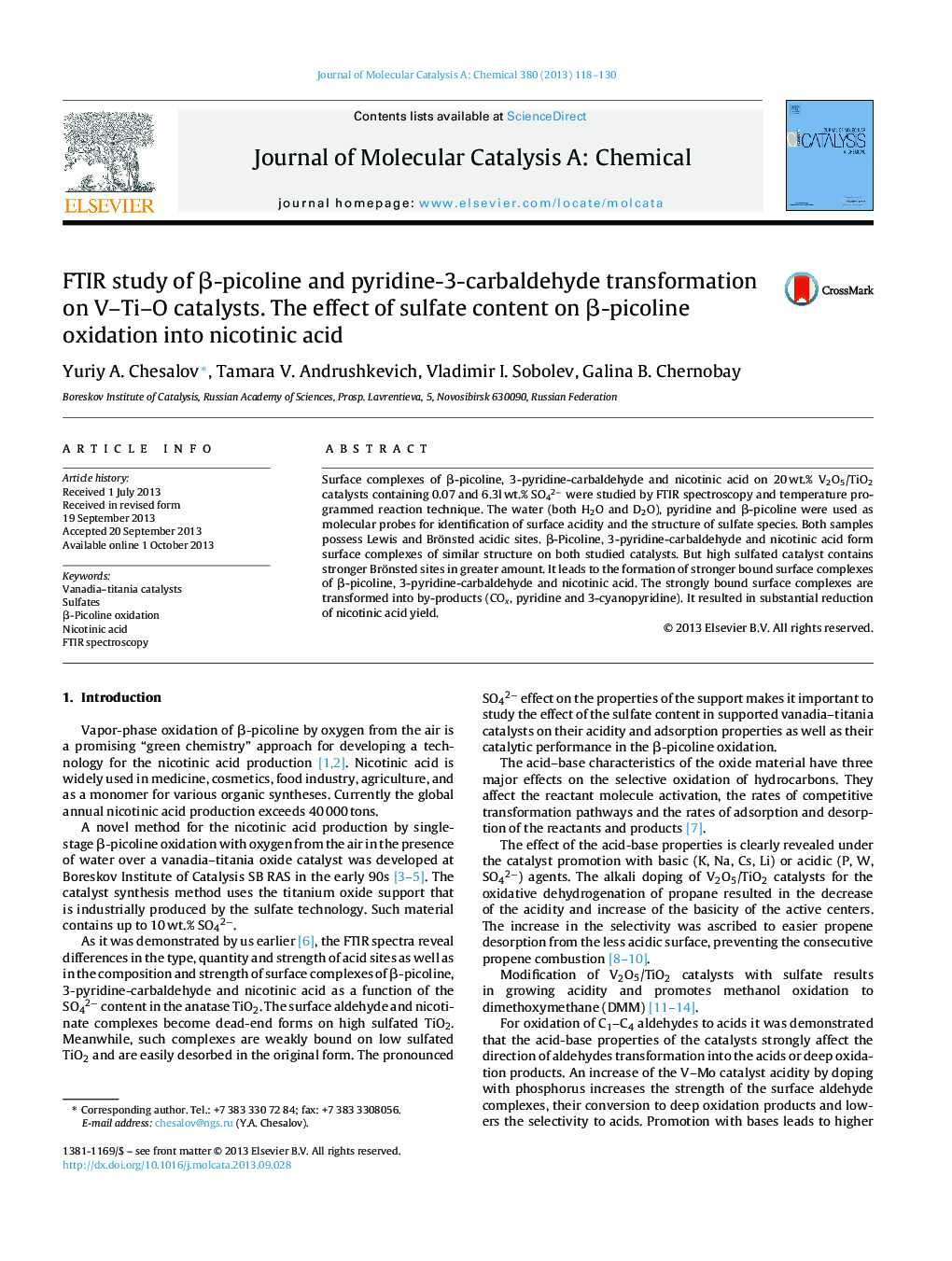| Article ID | Journal | Published Year | Pages | File Type |
|---|---|---|---|---|
| 65503 | Journal of Molecular Catalysis A: Chemical | 2013 | 13 Pages |
•The sulfated V–Ti oxide catalysts were tested in β-picoline oxidation.•The sulfation increases the number and strength of Brönsted acid sites.•It results in a change in the direction of β-picoline oxidation toward by-products.•The increase in the sulfate content reduces the yield of nicotinic acid.
Surface complexes of β-picoline, 3-pyridine-carbaldehyde and nicotinic acid on 20 wt.% V2O5/TiO2 catalysts containing 0.07 and 6.3l wt.% SO42− were studied by FTIR spectroscopy and temperature programmed reaction technique. The water (both H2O and D2O), pyridine and β-picoline were used as molecular probes for identification of surface acidity and the structure of sulfate species. Both samples possess Lewis and Brönsted acidic sites. β-Picoline, 3-pyridine-carbaldehyde and nicotinic acid form surface complexes of similar structure on both studied catalysts. But high sulfated catalyst contains stronger Brönsted sites in greater amount. It leads to the formation of stronger bound surface complexes of β-picoline, 3-pyridine-carbaldehyde and nicotinic acid. The strongly bound surface complexes are transformed into by-products (COx, pyridine and 3-cyanopyridine). It resulted in substantial reduction of nicotinic acid yield.
Graphical abstractFigure optionsDownload full-size imageDownload high-quality image (136 K)Download as PowerPoint slide
